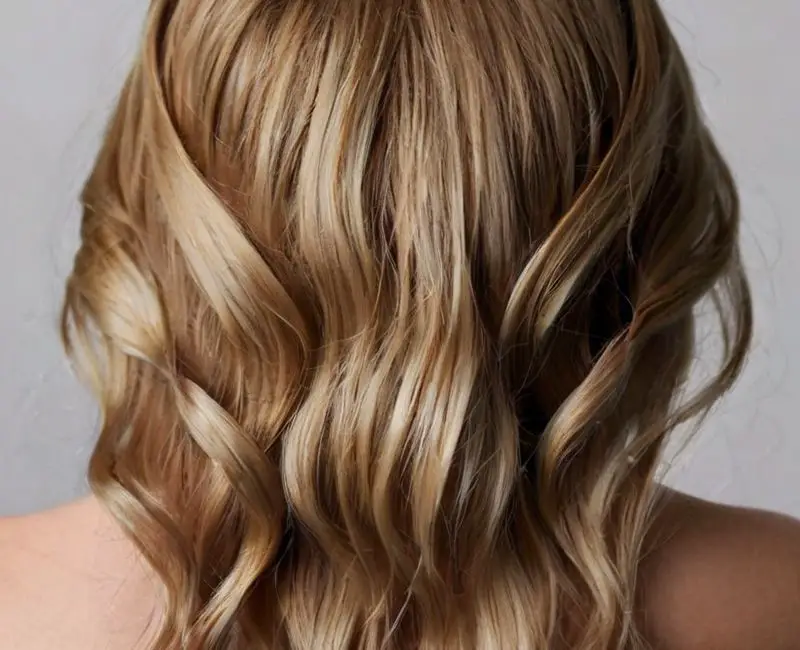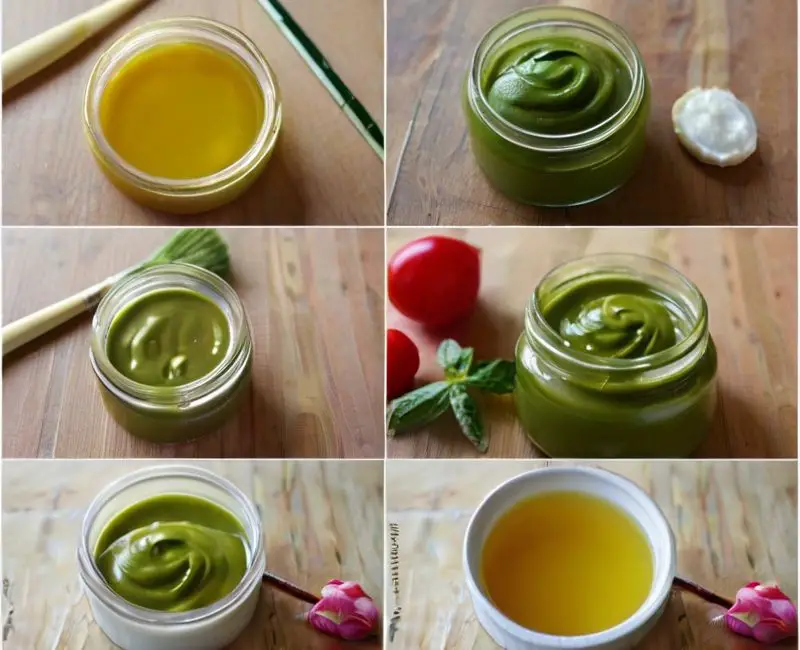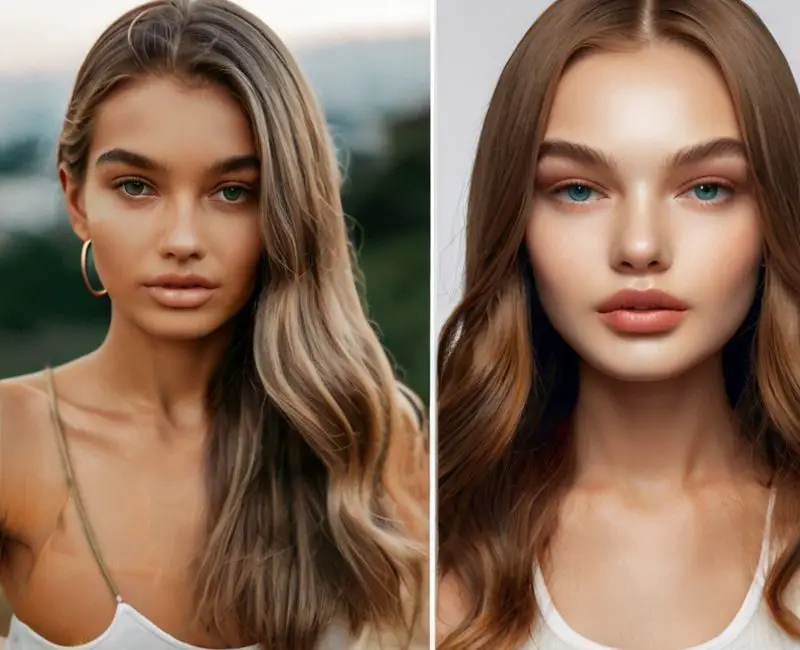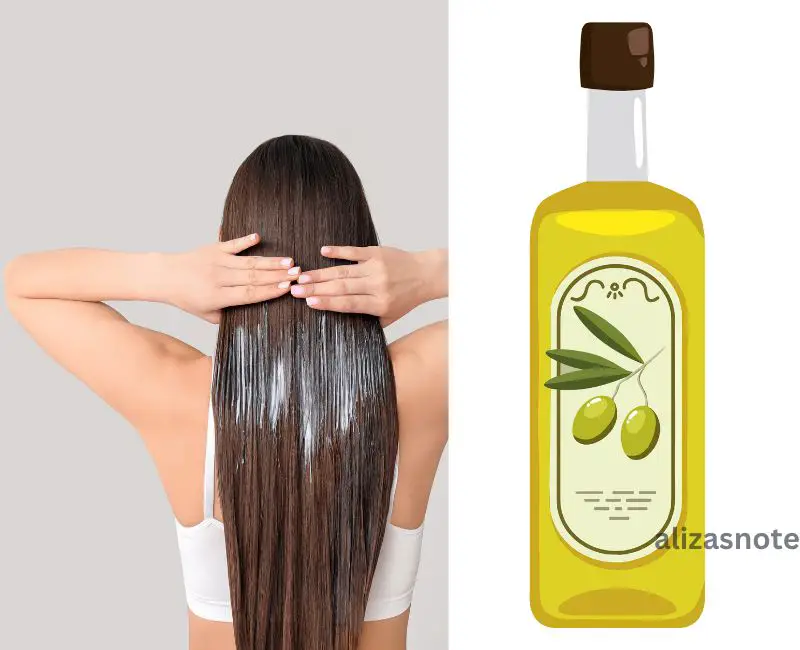How Long Can You Leave White Vinegar in Your Hair?

Many experts now suggest using edible white vinegar on hair to remove dandruff, frizziness, and bad scalps. But as we all know, white vinegar is acidic. Therefore, leaving it on your hair for too long may cause adverse effects. You should know how long can you leave white vinegar in your hair.
You can leave a white vinegar solution on your hair for about 10-15 minutes. After that, you’d better use some cold water to rinse off the hair properly. Otherwise, the acetic acid in the white vinegar might fade your hair.
White vinegar is a perfect ingredient to use for antibacterial purposes because its pH is slightly above 2.4. Yet, keeping the strong acidic formula on the head can cause damage and burns to the skin and hair. That’s why we opt to discuss the maximum time to keep white vinegar on your head for hair treatment.
How Can White Vinegar in Hair Care Help?
The acetic acid in white vinegar fights against higher pH and dirt buildup, along with fixing bad scalps, to make your hair look dense, natural, and healthy.
Apart from white vinegar, you can find several types of edible vinegar on the market. But only white vinegar has nearly 10% acetic acid. Such an amount of acid can easily fight dandruff and restore the natural pH of your cuticle and hair to moisturize with minimal use.
In short, applying or rinsing white vinegar on the head provides these features:
- Eliminates dandruff and buildups
- Makes hair moisturized and smooth
- Fixes split ends
- Increases volume
However, white vinegar can also damage your hair if you don’t know how to use it. People with smooth and shiny hair should prefer anything lighter than white vinegar or make the vinegar milder than the standard form.
How Long Can You Leave White Vinegar in Your Hair?
As I said earlier, you should never keep the white vinegar solution on your head for more than 15 minutes. The ideal duration is always 10 minutes or so.
Keeping the white vinegar for too long can damage your hair, cause skin problems, etc. In some medical situations, people who used homemade vinegar solutions improperly developed rashes and burns on the skin of their heads.
Most of the time, doctors have noted that their key negligence is overdosing or keeping the solvent on hair longer than required.
So, to get better assistances about how long to leave white vinegar on hair, Or whatever happens, don’t overdo anything with your hair and skin. If possible, consult a dermatologist near you before starting any self-treatment.
Read More:
Remedies for Dry and Frizzy Hair
What is the Best Way to Use White Vinegar in Your Hair?
The best way to use white vinegar is by pouring or spraying it while taking a shower with cold water.
Let’s show you a step-by-guide on how to use vinegar on bad hair.
1. Prepare the vinegar solution
First, you must know that the correct ratio for the water-vinegar solution is 2:1.
Take 100-150 ml of water and add 50-75 ml of the white vinegar you use in your kitchen. Stir the water and vinegar properly to make the solution. Then, keep it in a fresh sprayer or container.
2. Use shampoo on your hair
After that, go for a nice and cozy shower. Avoid warm water if possible.
When you’ve made your hair completely wet under the shower, use your regular shampoo to clean up every part of your hair.
3. Spray the solution
Next, wash away the shampoo and take the solution. We recommend keeping the vinegar solution in a spray bottle to avoid a mess.
On your wet hair, spray the solution from top to bottom.
4. Rinse your hair properly
Use your fingertips to rinse your whole hair gently. Take your time while doing so. But don’t use water or other stuff while scrubbing your hair.
5. Wait and wash after some time
If the rinsing is done properly, wait for around 10 minutes. Meanwhile, don’t pour water into your hair. When the time’s up, go under the shower to fully wash away the vinegar using cold water.
6. Dry your hair completely
Your hair treatment is done. Go to your room and dry your hair before going to do chores.
Using White Vinegar in Hair: Dos and Don’ts
Using white vinegar does have some advantages you can’t ignore. However, you only benefit when things are done right. So, let’s show you what to do and what not to do while using white vinegar on damaged hair.
Tips to Use While Vinegar
- If your scalp is too dry, you can add 1 or 2 tablespoons of extra vinegar to your solution.
- Use cold water to take a shower or clean the vinegar during the treatment session.
- If you don’t have a sprayer, pour vinegar into your palm and use it while bending your head.
- You can also use a baking soda solution on your hair if you smell the vinegar.
Things to Avoid When Using White Vinegar
- Don’t use conditioner after shampooing if you intend to use vinegar liquid.
- If you have wounds on the skin of your head, you should avoid using the vinegar treatment.
- Consult a doctor before determining how mild or strong a vinegar solution you need to be more precise.
- Don’t use the vinegar treatment more than twice a week.
Are There Any Side Effects of Using White Vinegar for Hair Treatment?
Sometimes, using vinegar as a treatment can have side effects. So, you better know the side effects of using white vinegar, or else you can’t eliminate the problems.
- The main issue with white vinegar is that it can fade your hair and make it look dull.
- Finding pure distillate vinegar is hard. The white vinegar you find at the supermarket contains other chemicals for artificial food standards. These chemicals can cause allergies and infections in sensitive skin.
- If the vinegar is not in the right ratio, it can increase hair and scalp damage.
What is the Best Alternative to White Vinegar for Curing Hair?
Without a doubt, the best alternative to white vinegar is apple cider vinegar. Home-care beauty enthusiasts often don’t recommend this item as apple cider is very costly.
Here are the key benefits of using ACV for hair treatment,
- ACV contains vitamins and other nutrients. It can help grow healthy hair.
- Using the right proportion of apple cider vinegar, you can tame bacterial and fungal diseases in your hair.
- Most importantly, apple cider has a lower amount of acetic acid. So, there’s less chance of serious side effects.
FAQ
Question 1: What happens if you leave the vinegar in your hair too long?
Answer: If vinegar stays on your hair for too long, it might make it dry and remove all the natural moisture. As a result, your hair would get damaged and break easily.
Question 2: Does white vinegar change your hair color?
Answer: If you’ve added artificial color to your hair, using white vinegar afterward might make the color look dull and faded. But most of the time, the right amount of vinegar won’t change the natural hair color.
Question 3: Which vinegar is best for hair?
Answer: White vinegar and apple cider vinegar are the right type of vinegar to develop and grow your hair. Using other vinegar might let you face some bad side effects.
Questions 4: How many times can I wash my hair with vinegar?
Answer: You shouldn’t use vinegar on your hair more than twice a week. Besides, if the solution has more than the required amount of vinegar, then it’s better to use it only once a week.
Questions 5: How do you remove vinegar from hair?
Answer: The easiest way to remove vinegar from hair is to make a paste using baking soda and water. Then use the paste on the hair and leave it for no more than 5-10 minutes. After that, wash away the paste by rinsing your hair with normal water.
Final Thoughts
Before wrapping up, let’s tell you a bitter truth. No matter how easy and reliable homemade solutions you find regarding hair and skin care, you better check what doctors say about your current conditions.
Although we’ve covered the general idea of how long can you leave white vinegar in your hair, some special conditions might require different criteria. So, feel free to reach out to us to learn more. Or, go to a nearby dermatologist.






